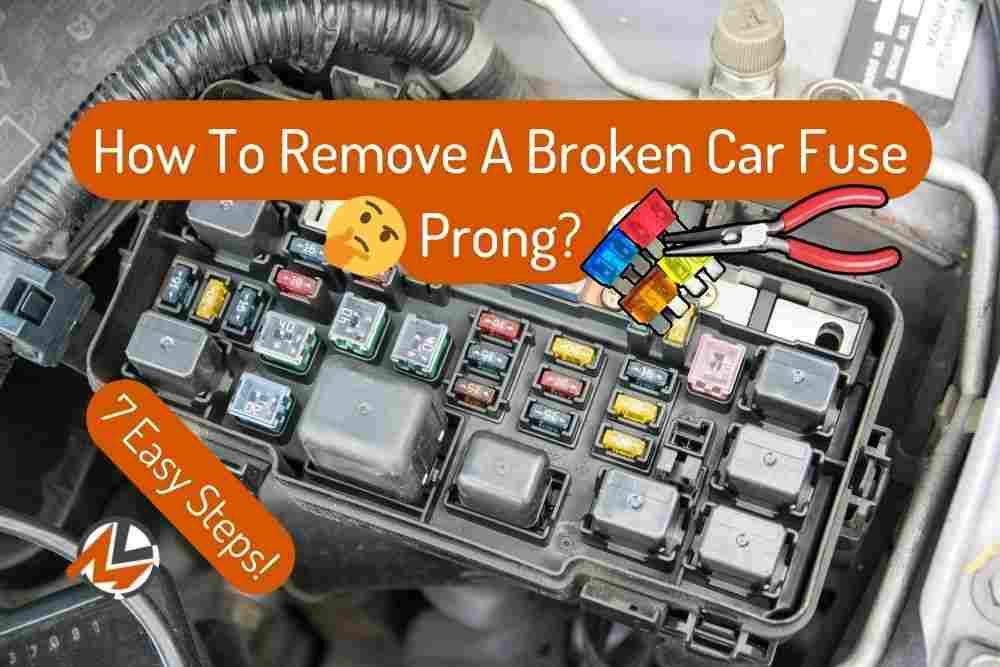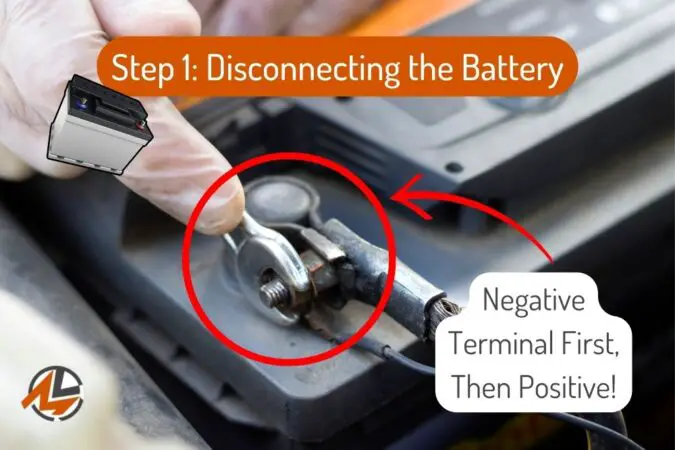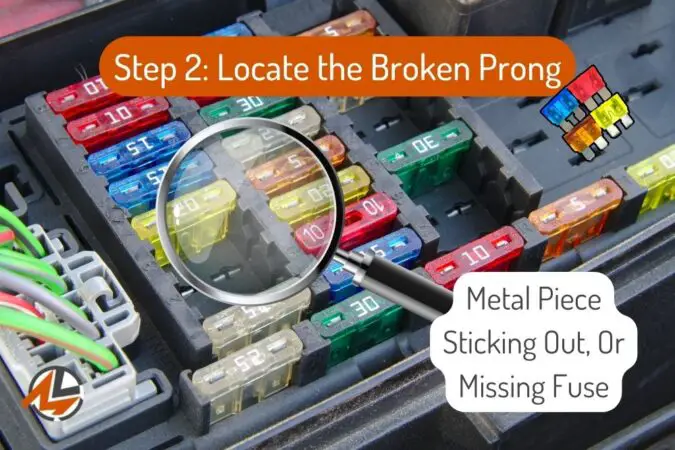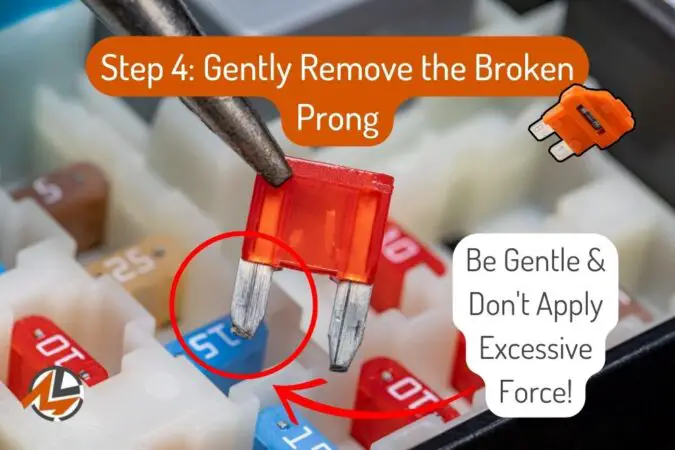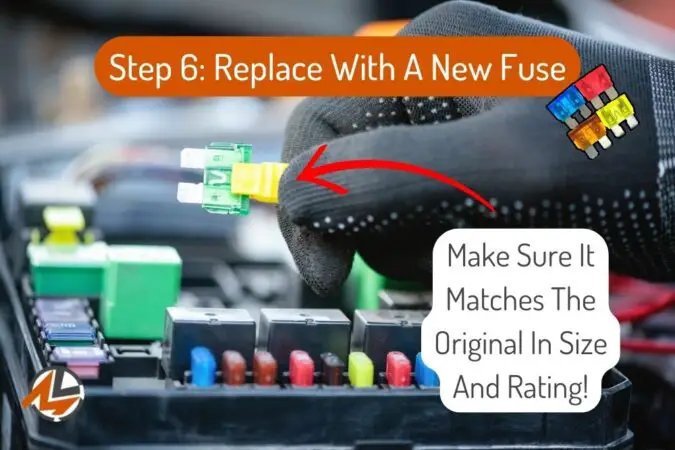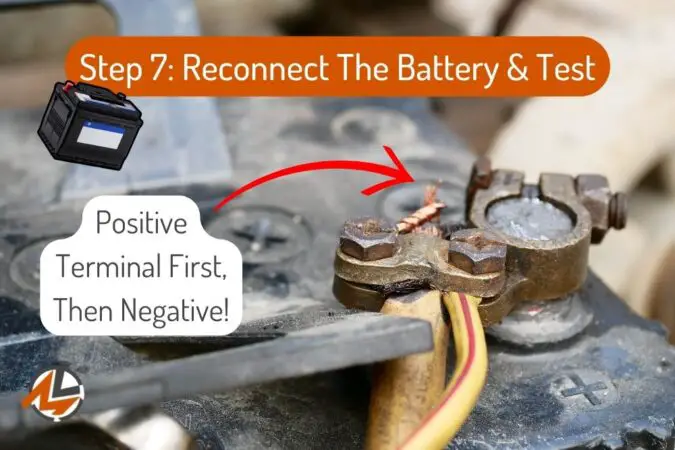Even after spending years working on cars and automotive electrics, it continues to confound me just how fragile fuse prongs are. So, if your fuse prong has broken off, how can you remove it from your car?
Bear in mind that if left unchecked, a broken fuse prong could lead to electrical malfunctions or even short circuits. Thankfully, needle-nose pliers can easily grip the broken prong, enabling careful extraction.
All you need to do is gently grip the broken fuse prong with the needle-nose pliers, and carefully pull it out of the fuse box. Once it’s removed, clean any debris or corrosion, and replace the fault fuse, as needed.
Fuse Prongs Broke Off In Fuse Box
As frustrating and potentially dangerous as it might be, with the right tools and a bit of patience, you can safely remove a broken fuse prong from your car’s fuse box. I’ve done it before, and you can too!
With that in mind, here’s a quick look at how you can remove a broken fuse prong from your car (click on each of the steps below to skip ahead to the detailed set of instructions further down below):
- STEP 1: Disconnecting your car’s battery (IMPORTANT!)
- STEP 2: Finding and identifying the broken fuse prongs
- STEP 3: Using the right tools to remove the broken fuse prongs
- STEP 4: Gently extracting the broken fuse prongs
- STEP 5: Inspecting and cleaning any debris or corrosion left behind
- STEP 6: Replacing the faulty old fuse with a brand-new one
- STEP 7: Reconnecting the battery and testing the system
1 – Safety First: Disconnecting the Battery
Before attempting any repairs or modifications on your vehicle, especially when dealing with electrical components, safety should always be the top priority. First up, you’ll have to disconnect the battery.
- Disconnecting the Battery – Always start by turning off the car’s engine. Then, disconnect the battery, and start with the negative terminal followed by the positive. This ensures that there’s no electrical current flowing, which could cause accidental shocks or short circuits.
- Wear Protective Gear – Consider wearing gloves to protect your hands from any sharp edges or potential electrical discharge. Safety goggles can also protect your eyes from any debris, so I’d suggest that, too.
2 – Locate the Broken Prong: Looking for the Broken Fuse Prong
The fuse box is the central hub for most of the electrical components in your car. So, the next step that you have to go through is locating the fuse box, and then figuring out which of the fuses has a broken prong.
- Finding the Fuse Box – In most vehicles, the primary fuse box is located in the engine bay. However, there might be secondary fuse panels inside the car, typically under the dashboard or in the glove compartment.
- Identifying the Broken Prong – Once you open the fuse box, visually inspect each fuse. The broken prong will typically be noticeable as a metal piece sticking out or if it’s missing from its designated slot.
3 – Use the Right Tools: Grabbing Some Needle-Nose Pliers
Having the right tools can make the extraction process of a broken fuse prong much smoother and prevent further damage. In this case, we’re looking for fine, precise, and small tools.
- Needle-Nose Pliers – These are perfect for gripping and extracting the broken prong due to their long and thin design, allowing them to slide into the fuse slot. They offer precision, which is crucial for this delicate task.
- Alternative Tools – In cases where the prong is deeply embedded or in a tight spot, small picks or dental tools could be more effective. Their sharp and pointed ends can reach areas that pliers might not.
4 – Gentle Extraction: Gripping and Removing the Broken Fuse Prong
This step requires a steady hand and a lot of patience. This is the point where, if you’re not confident about proceeding any further, I’d always recommend contacting a mechanic or technician.
- Gripping the Prong – Using the needle-nose pliers or a dental pick, carefully grip the broken prong. Ensure that you have a firm grip to prevent the broken fuse prong from slipping any further into the fuse slot.
- Extraction – Gently pull out the broken fuse prong, and ensure you don’t apply excessive force. Rapid or forceful movements can damage the fuse box or surrounding components.
5 – Clean and Inspect: Cleaning Up Any Debris or Corrosion
After extraction, it’s essential to ensure the fuse box is in good condition. I highly recommend a thorough clean-up of the fuse slot once the broken prong has been extracted, before you replace it with a new one.
- Cleaning – Use a soft brush to gently brush away any debris, dust, or corrosion from the fuse box and old fuse slot. A vacuum cleaner with a nozzle attachment can also be effective in removing finer particles.
- Inspection – Look for signs of damage, such as exposed wires, molten metal, or other corroded fuses. Any damaged components should be replaced beforehand to ensure the electrical system’s integrity.
6 – Replace the Fuse: Replacing It With A New Fuse
A broken fuse prong often means that the old fuse was compromised. Therefore, I would highly suggest going down to your local auto parts store and grabbing a replacement fuse.
- Choosing the Right Fuse – Always ensure that the replacement fuse matches the original in size and rating. Using incorrectly rated fuses can lead to electrical malfunctions or potential hazards.
- Inserting the New Fuse – Carefully slot the new fuse into the designated slot, ensuring it sits snugly and securely. For added peace of mind, you could also use a multimeter to test if the new fuse is working.
7 – Reconnect the Battery: And Test The Electrical System
With the brand-new fuse in place, it’s time to reconnect the battery. Finally, it’s essential to test your car’s electrical system and ensure everything works as it should.
- Battery Reconnection – Start by connecting the positive terminal of the battery, followed by the negative. This order minimizes the risk of accidental sparks or short circuits.
- Ignition Test – Once your battery has been reconnected, turn on your ignition and observe if the previously affected system or electrical component (which the old fuse was responsible for) is working correctly.
- Professional Help – If there are still issues or if you’re unsure about any steps or procedures that I’ve been able to outline here, it’s always best to consult with a professional mechanic or technician.

